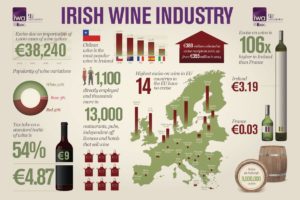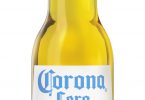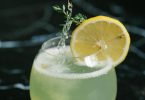Wine’s 9 million case high
It’s Irish Wine Market 2016 found that wine’s share of the overall alcohol market increased slightly from 27.7% in 2015 to 27.8% in 2016 thanks to Ireland’s economy performing well.
But the uncertainty around the Brexit negotiations has resulted in a fall in the value of Sterling. This is likely to drive cross-border shopping and has already seen a fall in the number British tourists visiting Ireland, stated the Chairman of the Irish Wine Association Jim Bradley in his introduction to this year’s report which puts at €380 million the amount of excise taken in on wine by the Exchequer in 2016, up from 2015’s €354.6 million.
He later stated that, “Despite this uncertainty and these challenges, the wine industry continues to employ over 1,100 people directly while supporting thousands of other jobs in Ireland’s 13,000 restaurants, pubs, independent off-licences and hotels that sell wine.
“Over the coming years the industry will struggle to perform and provide the €380 million it paid in excise to the Exchequer in 2016 unless the Government takes immediate action to reduce excise rates,” he warned, “Irish consumers continue to pay the highest rate of excise on wine in the EU and since 2012 the Government has subjected the sector to penal excise increases of 62%.”
He also pointed out in the report itself that, “While 14 EU countries pay no excise on wine, the excise rate in Ireland equates to €3.19 for a €9 bottle. This is 64 cent more expensive than Finland, the second most expensive country in the EU.
“In light of this stark reality, it is imperative that the Government decrease the rate of excise on wine in order to alleviate the risks associated with the impact of Brexit.
“The benefits of an excise decrease will not only benefit consumers but it will protect and create jobs in the tourism, retail and hospitality trade.”
The negative impact of Brexit on the industry must be considered by the Government in Budget 2018, notes the report, with the IWA again calling for an excise reduction, stating that Ireland’s penal excise rate is bad for jobs, consumers and tourism.
The Irish Government has now increased excise on wine by 62% since 2012.
These increases, introduced during the financial crisis as an emergency measure, have created significant cashflow issues for distributors and importers too as many have to pay excise up-front. Irish wine importers and distributors are now paying €38,240 up-front on excise per 1,000 cases imported, an increase of 62% since 2012.
Wine consumption
Per capita consumption of wine in Ireland has risen to 17.1 litres from 16.44 in 2015.
The report finds that a growing number of males have entered the wine market in the last 12 months with the percentage of males drinking wine rising from 39% in 2015 to 45% by volume last year. Among females, those over 65 years-of-age have increased their share of consumption from 15% to 20% while those in the 35-44 age bracket have reduced their share from 20% to 15%.
Beer has lost share of alcohol consumption, dropping from 47.0% in 2015 to 46.2% in 2016 while wine saw its share increase from 27.7% to 27.8%. Spirits too saw an increase in volume share going from 18.7% in 2015 to 19.2% in 2016 as did cider which stood at 6.8% in 2016, up from 2015’s 6.6% share.
The on-trade continued to increase its share of wine sales compared to the off-trade. On-trade sales of wine grew significantly to 21% of total wine sales in 2016. This share was 19% in 2014 and 19.1% in 2015.
In the off-trade the multiples continued to grow their share, rising from 48.8% in 2015 to 50% last year. Symbol groups too grew share slightly to 11% while the independents also saw a slight increase to 10% from 9.9%.
The discounters lost out, with their share falling from 22.5% in 2015 to 21% last year.
Country of origin
At 2.3 million cases, Chile continued to top the country of origin table, growing its share of the overall wine market to 25.6% in 2016, up from 2015’s figure of 25.3% as second placed Australia, with 1.6 million cases sold, lost share to 17.7% from 18.1%.
With sales of 1.1 milllion cases Spain grew share to 12.3% from 11.8% as did Italy, up to 9.7% (on sales of 874,743 cases) from 9.5%.
The most popular price bracket for bottles of wine has fallen in the last year from wine in the €9.00-€9.99 price range (37.6% of sales in 2015) to wine in the €8.0-€8.99 range (40.9% of all sales in 2016).
At the launch of the report, Head of the Irish Wine Association Jonathan McDade emphasised that the IWA’s two biggest concerns are the high rate of excise on wine and Brexit. Ireland’s high excise rate meant that a €9 bottle of wine contained €3.16 in excise tax thus producing a combined VAT and excise charge of 54%.









